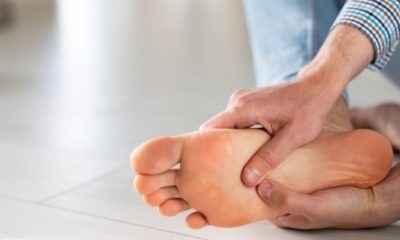Inadequately controlled diabetes causes unfortunate dissemination and nerve harm to the feet. In some cases the harm can be extreme and requires proficient diabetic foot care. How can you say whether you have diabetic feet and when to see a specialist? Here are probably the most well-known indications of diabetic feet.
Diabetic Neuropathy
On the off chance that you experience an incessant shivering or consuming sensation in your feet, diabetic neuropathy could be the offender. This condition alludes to an absence of feeling because of unfortunate blood flow. It happens when fats limited the feet’s veins, prompting total deadness. Extreme diabetic neuropathy can be perilous since it goes before deadly side effects like foot ulcers that frequently bring about removals. Assuming that you experience reliable shivering or consuming in your feet, look for clinical consideration straightaway.
Foot Ulcers
Diabetic foot ulcers (likewise called diabetic neuropathic foot ulcers) are open bruises or wounds predominant on the foot’s base. They influence around 15% of all diabetes patients. These injuries might create on the highest point of the foot or between the toes. Foot ulcers are frequently created because of fringe neuropathy (neuropathy of the appendages) due to unfortunate bloodstream.
Diabetic injuries consume most of the day to mend and can break the skin further without prompt clinical consideration. Be that as it may, not all foot ulcers are diabetic related; a few outcomes from ineffectively fitted footwear and injury from strolling shoeless. It is ideal to get a clinical examination to decide your candidature for diabetic foot ulcers and further medicines.
Foot Infections
A typical confusion of diabetic neuropathy is foot contamination. Since neuropathy numbs the feet, it very well may be challenging to see any twisted until it becomes extreme. Feet diseases happen when microorganisms or growth get into the broken skin or wound. Lethal foot contaminations might spread into the circulation system and the bones or lead to gangrene. Experiencing the same thing, the specialist might have no other choice other than to suggest a lower furthest point removal.
Different indications of foot contaminations to search for include:
Agony and expanding
Smell
Change in skin tone
Slow-to-recuperate wounds
Seepage
Rankles
Rankles are rises that pop on your feet because of liquid collection. Individuals with diabetes are in danger of getting rankles for quite a long time.
First and foremost, diabetic neuropathy makes it challenging for patients to know when their shoes are excessively little. Strolling in shoes that are too little causes steady grating, which brings about rankles.
Furthermore, diabetes likewise causes unconstrained rankle arrangement. Specialists allude to this condition as bullous diabeticorum.
Experts exhort against popping the rankles as this might cause diseases. All things being equal, they suggest utilizing antibacterial cream. A clinical expert will decide the most proper one for you.
Corns and Calluses
Corns and calluses are ordinarily created on toes, stack of feet, or at the lower part of feet. They’re thick fixes of skin that foster when region of the skin rub against one another or something different more than once. Corns and calluses frequently result from sick fitting shoes, strolling without socks, going shoeless, or standing or strolling for a really long time. They may not suggest diabetes, however they now and again do, particularly on the off chance that you experience different indications of a diabetic foot.
Plantar Warts
Plantar moles are hard, grainy developments that normally show up on the impact points or bundles of your feet. They can be agonizing, and they’re brought about by an infection. They’re not generally an indication of diabetes, but rather they might demonstrate that you have a debilitated invulnerable framework because of diabetes.
Different indications of diabetic plantar moles to check for include:
Mole seeds — little dark pinpoints that happen ordinarily between the toenails
Skin delicacy or touchiness while standing or strolling
Skin injuries around the foot’s edges
Get Immediate Diabetic Foot Care
Indications of diabetic feet contrast in seriousness. Some, as calluses, are not difficult to treat. Others, similar to diseases, are more mind boggling.
It’s generally better to look for sure-fire diabetic foot care assuming that you experience any of the above-examined signs. Your primary care physician will suggest the most suitable course of treatment.






